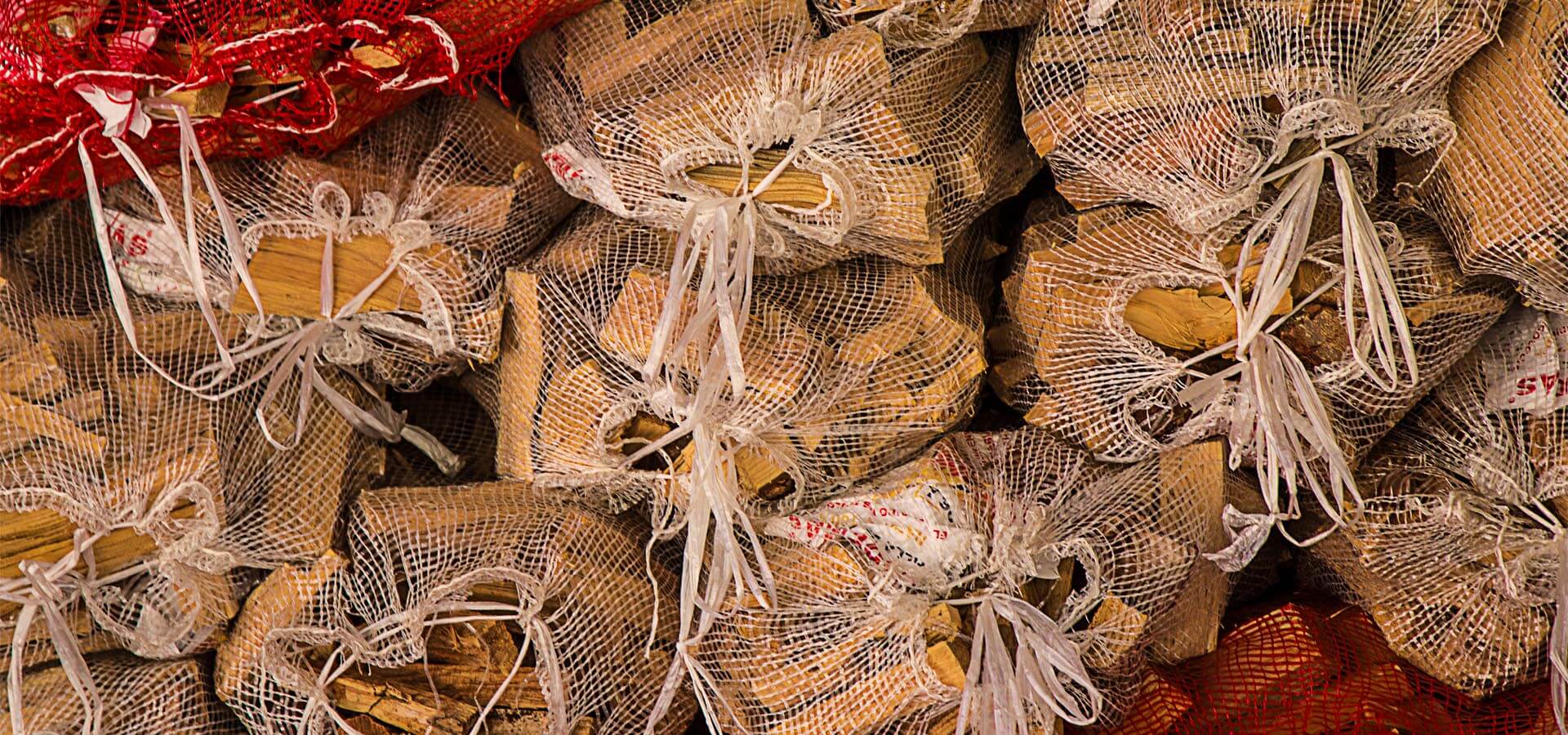
Why does firewood need to be dry?
In order to burn efficiently, wood needs to be as dry as possible. Otherwise, a portion of the heat in your burner is wasted on evaporating water from the logs. This results in lower overall heat output and a greater concentration of condensates in your chimney. Incidentally, condensates are the most common cause of chimney fires. When you are looking at firewood, you must take care to ensure the logs you are looking at have been properly dried. With a low moisture content, your wood will burn well and produce little smoke. It will also yield more heat for your home and reduce blackening of the glass on your stone door. Did you know that fresh cut, green wood can have a moisture content of more than 50%? This will not burn efficiently – as previously stated, you want the moisture content to be below 20% for the perfect burn.
What are kiln dried logs?
Kiln drying is a process by which the wood is force-dried in a commercial kiln. It takes between 4 and 6 days, depending on the efficiency of the kiln, and is typically done at a temperature around 70°C. The process is started by stacking pre-cut green wood into metal cages and placing them inside the kiln. A commercial kiln is like a giant oven with a huge fan to circulate the air. There are various sizes and functions of these kilns, but most are able to process enormous quantities of wood at a time (sometimes as much as 100 pallets!). The heat drives moisture out of the wood through the flow of the air and complex processes that force moisture out of the wood. Whether you choose kiln dried oak logs in nets or any other type of wood, they are guaranteed to perform well. They are thoroughly dry, so will light swiftly, burn efficiently and yield a very high heat output. The clean burn will not stain the glass on a stove or cause excessive soot build-up inside the flue. Kiln-dried logs are still perfectly natural, they simply have a lower moisture content for a clean, hot and efficient burn.

Pros:
- The logs are instantly ready to burn
- Dryer wood means a clean burn and high heat output
- Kiln dried logs can be produced on-demand, so there is less need to store large quantities
- There is no shortage of kiln dried logs, they are the best wood for burning
Cons:
- Delivery is on pallets so properties require access for a large truck
- The cost is higher than other log types

Pros:
- You can cut and dry wood yourself
- If well-seasoned, the logs can achieve a heat output almost as good as kiln dried logs
Cons:
- Wood seasoning takes a long time (1-2+ years)
- To season green wood yourself, you need space to store and dry it
- Seasoned wood only dried down to ~25% moisture naturally – a lower moisture content requires open air drying in summer
- Supply of seasoned wood is usually more limited
Which is the better choice
Our kiln dried logs in nets are consistently dried right through, while air-dried logs will have different moisture levels. This means the kiln-dried option is guaranteed to burn well and be consistently dry. The cost is a little higher, but you will be able to light them quickly and produce up to 30% more heat per kilogram, so the benefits will be more economical. Additionally, kiln-dried firewood will not contain any insects or mould. Those creepy crawlies are likely to make their presence known when bringing the logs inside and setting up a fire. Moreover, kiln dried logs are ready all year round. If you have left it a bit late to stock up, there will be reliable kiln dried logs available. Overall, the advantages of kiln dried logs far outweigh the benefits of seasoned ones. We are confident our kiln-dried ash logs in nets are a more economical and eco-friendly choice than firewood prepared in any other way. They burn efficiently, with high heat output and give off minimal pollutants – the perfect way to get maximum bang for your buck.
